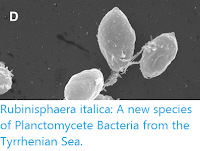Actinobacteria are Gram-positive, typically filamentous, aerobic Bacteria found in
soils and aquatic ecosystems, where they play a significant role in the
decomposition of Plant material and other organic matter, making them
highly important in the formation and maintenance of soils. Some species
of Actinobacteria are capable of 'fixing' nitrogen from the atmosphere
(i.e. taking atmospheric nitrogen and using it to form nitrogen
compounds that can be utilised by Plants). Members of the genus Glycomyces form an extensively branched vegetative mycelium with aerial hyphae.
In a paper published in the International Journal of Systematic and Evolutionary Microbiology on 3 April 2020, Lulu Qian, Liping Duan, Jiaying Lin, Yanming Yang, Jia Song, Xiangjing Wang, and Junwei Zhao of the Key Laboratory of Agricultural Microbiology of Heilongjiang Province at the Northeast Agricultural University, and Wensheng Xiang, also of the Key Laboratory of Agricultural Microbiology of Heilongjiang Province at the Northeast Agricultural University, and of the State Key Laboratory for Biology of Plant Diseases and Insect Pests at the Institute of Plant Protection of the Chinese Academy of Agricultural Sciences, describe a new species of Glycomyces isolated from the rhizosphere soil of Wheat plants from Hebei Province, China.
The new species is named Glycomyces albidus, where 'albidus' means ''whitish'. It is an aerobic, Gram-stain-positive Actinomycete that forms branched substrate hyphae and aerial mycelium that differentiates into straight or flexuous spore chains consisting of cylindrical spores. It grows well on a variety of media, tolerates up to 3.0 % NaCl (salt) and grows at temperatures between 10 and 45 °C, with an optimum temperature of 28 °C, and at pH 6.0–10.0, the optimum being pH 7.0.
Scanning electron micrograph of Glycomyces albidus grown on ISP 4 agar (International Streptomyces Project medium 4 or Inorganic Salt Starch Agar) at 28 °C for 4 weeks. Scale bar is 1 μm. Qian et al. (2020).
See also...
Follow Sciency Thoughts on
Facebook.







